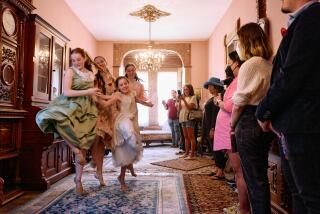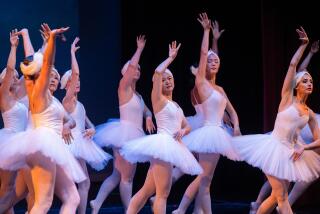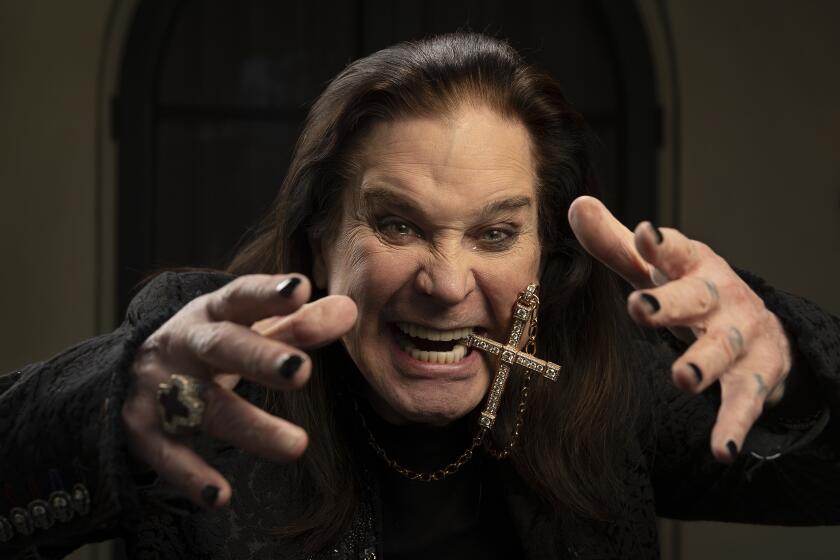DANCE REVIEW : Lines Contemporary Ballet in Program at Pepperdine
- Share via
In his pursuit of the deepest, most sophisticated modernism in classical dance, Alonzo King has a way of making other ballet choreographers look crude if not downright inane.
King brought his Bay Area-based Lines Contemporary Ballet to Pepperdine University on Saturday for a single three-part program. Each piece focused on relationships in unusual ways, with King’s surging, restless style requiring not only technical discipline but also a thoughtful, distinctively personal approach to interpretation.
You’d expect to find luminous authority in the dancing of Christopher Boatwright, a major artist formerly with the Stuttgart and San Francisco ballets. However, everyone in King’s 14-member multicultural ensemble seems to glow in the dark--right down to the newest recruit, Finnish firebrand Tomi Paasonen.
It’s no accident, for in “Ocean” the wailing and chanting of a Middle Eastern-flavored jazz score by the great Pharoah Sanders mandates a dimension of soul that most ballet companies would be hopeless to provide. Here, however, the dancers can move through a golden shimmer of light and music as if blessed by both--and give themselves to the ecstatic drums of the finale with a sense of heightened awareness.
“Ocean” begins with an intense duet for Boatwright and Gregory Dawson that traces shifting patterns of dependency without ever labeling (and thus diminishing) the relationship. Is Boatwright the brother, teacher, lover, friend of Dawson? Yes, all that and more.
Following their taut partnership, King creates ever-freer statements of closeness between couples intercut with solos defining a joyous independence. The finale layers Boatwright’s slow-motion serenity onto the ensemble’s high-energy bravado: complex, thrilling but never assaultive, never Broadway.
The equally large-scale suite “Garland” explores manipulation from contrasting viewpoints: sociological (the way people push one another around) and mystical (the way unseen forces bedevil individuals--or link them in shared energy states). Set to music by John Oswald (the opening) and Peter Garland (the rest), it develops from a quasi-demonic Katherine Warner controlling everyone else to duets about interpersonal victimization.
Completing the program: “Poulenc Pas de Deux,” which finds intriguing, unpredictable expressions of need and support for Nora Heiber and Richard Redlefsen, but seems willfully and none too persuasively imposed on the music.
More to Read
The biggest entertainment stories
Get our big stories about Hollywood, film, television, music, arts, culture and more right in your inbox as soon as they publish.
You may occasionally receive promotional content from the Los Angeles Times.










